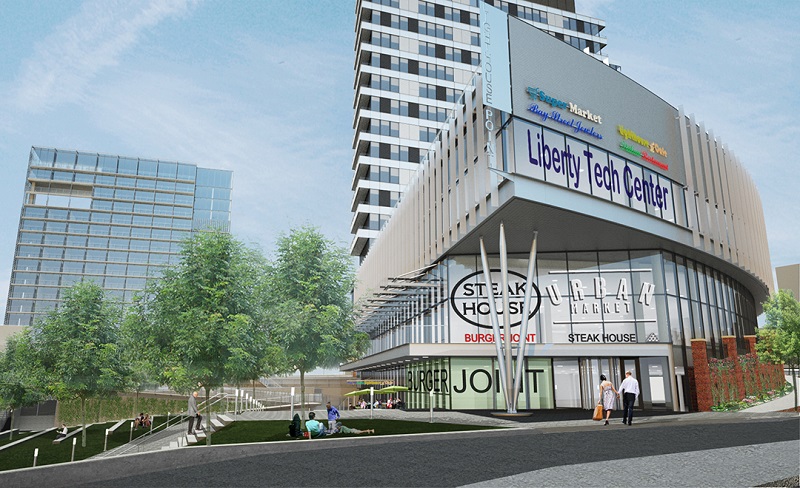Equity, Construction Financing Set for Lighthouse Point
HFF arranged the financing for the first phase of the $200 million mixed-use development on Staten Island's waterfront, hoping to be a new "New York destination."
By Scott Baltic, Contributing Editor
Joint venture equity and construction financing for the first phase of Lighthouse Point, a mixed-use residential and commercial project on Staten Island, has been finalized. HFF arranged the financing earlier this week on behalf of the developer, Triangle Equities.
The JV equity partner, Lubert-Adler Partners LP, contributed a majority interest of the required equity for the $95 million first phase. In addition, HFF secured construction financing for the partnership through Citizens Bank, a subsidiary of Citizens Financial Group Inc.
The dollar amounts involved were not disclosed, HFF was unable to provide additional information, and the developer did not respond to CPE’s requests for further information.
The transit-oriented project, adjacent to the Staten Island Ferry Terminal on the St. George waterfront, will ultimately consist of two phases and be valued at $200 million. Encompassing retail, office, hospitality and residential space upon completion, Lighthouse Point will occupy the site of the historic but long-vacant U.S. Lighthouse Depot Complex and will incorporate existing architectural elements into the final design.
The first phase will feature a 13-story, 116-unit residential tower; a three-story, 59,700-square-foot commercial building; a 274-space underground parking garage; and a 1-acre public plaza and green space.The second phase, which is not yet scheduled, will see the rehabilitation of four historic buildings and the construction of a 175-key hotel.
The HFF team representing Triangle Equities was led by senior managing director Andrew Scandalios, managing director Rob Hinckley and director Geoff Goldstein.
“Structuring the capital was extraordinarily complex,” Hinckley said in a prepared statement, “since the project utilizes many different sources, including three New Markets Tax Credit providers, New York City grant money, New York State grant money, commercial bank debt from Citizens Bank and private equity from Lubert-Adler. Lighthouse Point also makes use of the ‘80/20’ 421a tax abatement program [for affordable housing] and is on a city ground lease.”
Scandalios cited the New York Wheel, a 630-foot, London Eye-styled Ferris wheel, and the 300,000-square-foot Empire Outlets mall, both now underway very close by, as additional factors that will turn the area into “a New York destination benefitting local businesses and residents through an influx of commuter and tourist dollars.”
Lighthouse Point has not had an easy path. Originally approved by the city in early 2007, it languished for years after the economic downturn. CPE’s January 2014 report that the project was moving forward proved to be a bit premature. And though Triangle Equities did execute the lease for the 3-acre parcel with the New York City Economic Development Corp. several months later, obviously the expectation at that time that ground would be broken in fall 2014 also was too optimistic. The coming months should bring more information on the timeline for the project.







You must be logged in to post a comment.